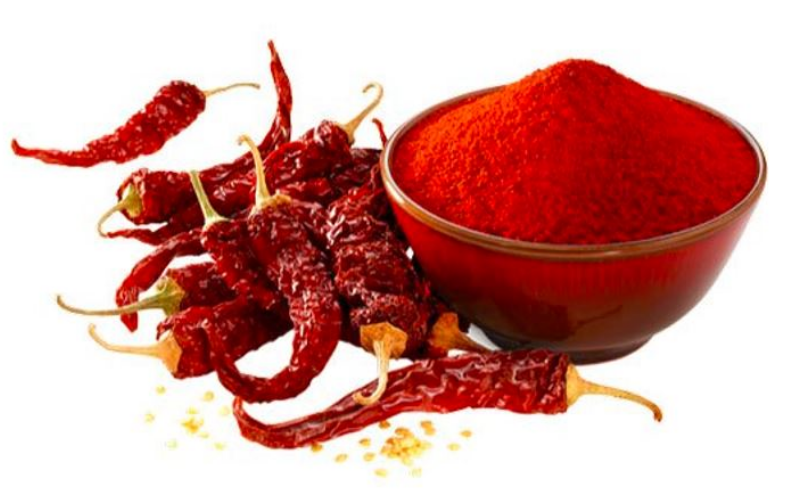Are you a fan of spicy food? Then you must know about the fiery and flavorful red chilli! This small but mighty ingredient has been an integral part of cuisines across the world, adding a punch to every dish it touches. But did you know that red chilli also comes with numerous health benefits? From aiding digestion to boosting immunity, this versatile spice packs quite a nutritional punch. we’ll explore everything there is to know about red chilli – its types, uses, benefits and even side effects. So sit tight and get ready for some spicy revelations!
What is red chilli?
Red chilli, also known as cayenne pepper or chili powder, is a spice that comes from various plants of the Capsicum family. These small and vibrant red pods are widely used in cuisines all over the world for their fiery flavor and intense heat.
Red chillies are typically harvested when they reach maturity, usually around 60 to 80 days after planting. They can be eaten fresh or dried, with both forms having their own unique taste and texture.
The Scoville scale measures the level of spiciness in peppers; red chillies rank quite high on this scale due to their capsaicin content. Capsaicin is responsible for causing a burning sensation in your mouth when you eat spicy food.
Apart from being used for cooking, red chilli has been traditionally used for medicinal purposes too! It’s believed that consuming it can help alleviate pain, improve digestion and even boost metabolism!
So if you’re looking to add some zing to your meals while reaping its health benefits at the same time – then red chilli is just what you need!
The different types of red chilli
Red chilli is not just a single spice, but a family of spices that differ in terms of flavour and heat. There are several different types of red chilli available around the world, each with its own unique characteristics.
One type of red chilli is the Cayenne pepper. It has a bright red colour, and it’s often used to add heat to dishes like chili con carne and hot sauces.
Another popular variety is the Thai bird’s eye chilli. This tiny pepper packs a powerful punch which makes it perfect for adding some kick to soups, stir-fries or salads.
The Kashmiri chilli comes from India and has a deep red colour with medium heat levels. It’s great for giving curries their rich reddish-orange color without making them too spicy.
Ancho peppers come from Mexico and have fruity flavours with mild to medium heat levels. They are commonly used in Mexican cuisine in dishes such as mole sauce or enchiladas.
There’s the Habanero pepper which hails from Central America; it has an intense fiery flavor that can be tempered by pairing it with sweet fruits or vegetables like mangoes or carrots.
In summary, there are many different types of red chilies available worldwide, each offering their unique flavour profiles and distinct heat levels suitable for various recipes.
The benefits of red chilli
Red chilli is not just a spice that makes your food taste better, but it also has several health benefits. The active compound in red chilli, capsaicin, is responsible for the many therapeutic properties of this spice.
One of the most significant benefits of red chilli is its ability to boost metabolism and aid in weight loss. Capsaicin increases body temperature and stimulates the production of brown fat cells which burn calories more efficiently.
Red chilli also has anti-inflammatory properties that help reduce inflammation in the body. It can alleviate pain from conditions like arthritis and even prevent cancer by inducing cell death in cancer cells without harming healthy cells.
Moreover, red chilli can improve heart health by reducing blood pressure levels and decreasing bad cholesterol levels while increasing good cholesterol levels.
Consuming red chilli may provide relief from nasal congestion due to its ability to dilate blood vessels and clear mucus membranes.
Incorporating red chilli into your diet can lead to numerous health benefits beyond just adding flavor to your meals.
The side effects of red chilli
While red chilli is known for its many health benefits, it’s important to be aware of its potential side effects. One of the most common side effects associated with consuming red chilli is gastrointestinal distress. This can include stomach pain, bloating, and diarrhea.
Additionally, some people may experience heartburn or acid reflux after eating spicy foods like red chilli. For those who suffer from these conditions regularly, it may be best to avoid consuming large amounts of this spice.
Another possible side effect of red chilli consumption is allergic reactions. While relatively rare, some individuals may develop an allergy to capsaicin – the compound responsible for the heat in peppers. Symptoms of an allergic reaction can range from mild itching and hives to more severe symptoms such as difficulty breathing or swelling.
Excessive consumption of red chilli over time has been linked to damage in the lining of the digestive tract and increased risk for certain types of cancer. It’s important to consume this spice in moderation and consult a healthcare professional if you have any concerns about your diet.
While there are certainly numerous benefits associated with consuming red chilli pepper regularly – including improved digestion and weight loss- it’s crucial not to overlook potential negative impacts on your health when incorporating this spice into your diet.
How to use red chilli
Red chilli is a versatile spice that can be used in various ways to add flavor and heat to your dishes. Here are some creative ways to use red chilli:
1. Infuse oil: By infusing oil with red chilli, you can easily add flavor and heat to any dish. Simply warm up a neutral oil like vegetable or grapeseed oil with some chopped red chillies until fragrant.
2. Add it to soups: Red chili adds depth and complexity of flavors when added into soups or stews during cooking process.
3. Spice up marinades: A touch of crushed red pepper flakes in your favorite marinade will make meats more flavorful before grilling or broiling.
4. Make spicy sauces: Blend together fresh or dried red chilies, garlic, vinegar, sugar, salt and other spices for a fiery hot sauce perfect for dipping or drizzling over food
5. Top off pizzas: Sprinkle sliced thin slices of fresh red chilies on top of pizza toppings before baking for an extra-spicy kick!
Whether you prefer whole peppers crushed flakes, ground powder form the possibilities are endless when it comes to using this bold ingredient!
Recipes with red chilli
Red chilli is a versatile ingredient that can add heat and flavor to any dish. Here are some delicious recipes with red chilli that you can try at home:
1. Spicy stir-fry: Heat oil in a pan, add sliced chicken or vegetables, minced garlic and ginger. Add chopped red chillies according to your taste preference along with soy sauce and honey for sweetness.
2. Red chili paste: Blend together whole dried red chilies, garlic cloves, shallots, vinegar and salt until you get a smooth paste consistency. This paste can be used as a marinade or added to soups or stews for an extra kick of spice.
3. Grilled shrimp skewers: Thread large shrimp onto skewers and brush with olive oil mixed with finely chopped red chillies, lime juice and salt. Grill on high heat until the shrimp are cooked through.
4. Spicy guacamole: Mix mashed avocados with diced tomatoes, onions, cilantro and minced jalapenos (or substitute it with finely chopped red chillies). Add lime juice and salt according to your taste preferences.
5.Chicken curry – Cook chicken pieces in tomato-onion gravy flavored by spices such as cumin powder,cinnamon stick,bay leaf,fennel seeds,garam masala etc.
Add green/red chilly depending upon the spiciness required.
These recipes showcase just how much versatility the humble red chilli can bring into our kitchens!
Conclusion
In summary, red chilli has various benefits which make it a great addition to any meal. It is rich in vitamins and minerals and contains capsaicin that helps with pain relief, digestion, weight loss and many other health issues. However, excessive consumption of red chilli can lead to side effects such as heartburn, upset stomach or skin irritation.
When using red chilli in cooking, be sure to start with small amounts until you find the right level of heat for your taste buds. Red chilli can add an extra kick to soups, sauces, stir-fries and more!
Incorporating red chilli into your diet can not only improve your overall health but also enhance the flavor of your meals. So why not spice up your life with some delicious dishes made with this fiery ingredient?





